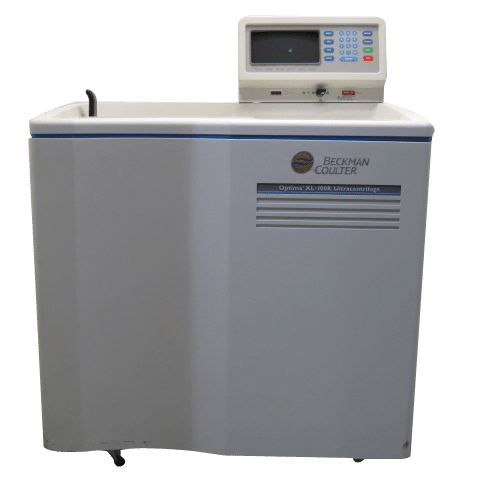Beckman-Coulter Optima XL-I

Location - Britannia 107
For enquiries, please contact - Dr. Karin Smorodinsky-Atias
The information provided in this section is taken from “ProteomeLab XL-A/XL-I - Instructions for Use” by Beckman Coulter and “Introduction to analytical ultracentrifugation”, Ralston, G.B., 1993: Beckman.
The solvent density and solution viscosity have a significant effect on the measured sedimentation coefficient.
Accordingly, it is important to carefully select the components (and their concentration) of the buffer and assay temperature.
Sample
The OD of the sample must be withing the linear range (0.1 to 1.5). Therefore, to determine the optimal concentration obtain the sample spectra (with the final buffer), monitoring the same wavelength that will be used for the assay.
Buffer
-
If working with a protein sample, make sure to select the suitable buffer pH (pH=1±pKa).
-
Use buffer concentrations between 10 and 50 mM, to ensure that the pH remains constant.
-
Add up to 200 mM salt. Higher salt concentrations may affect the behavior of the molecule and complicate analysis.
-
Make sure to use the exact same buffer for the assay reference/control.
-
Avoid using buffer ingredients that might form a gradient (glycerol).
-
It is best to select a buffer that most closely resembles water, but still maintains an optimal environment for the analyzed sample.

